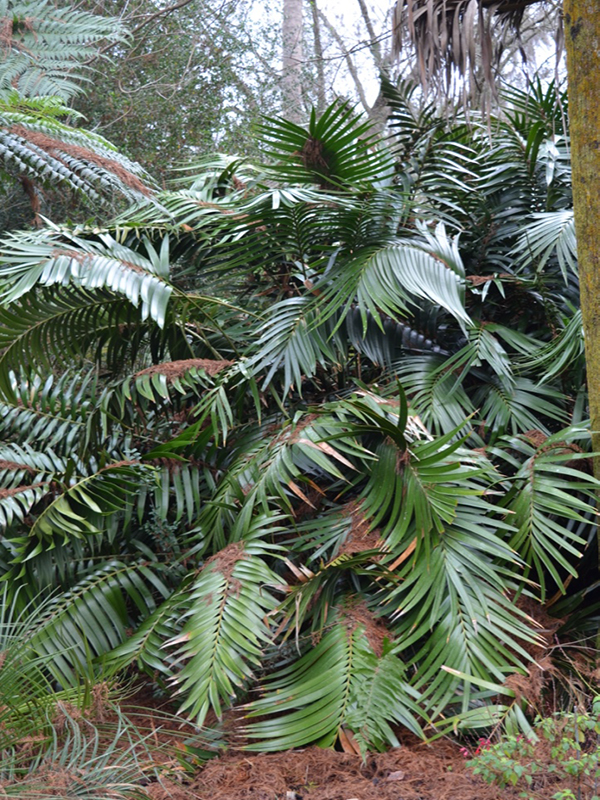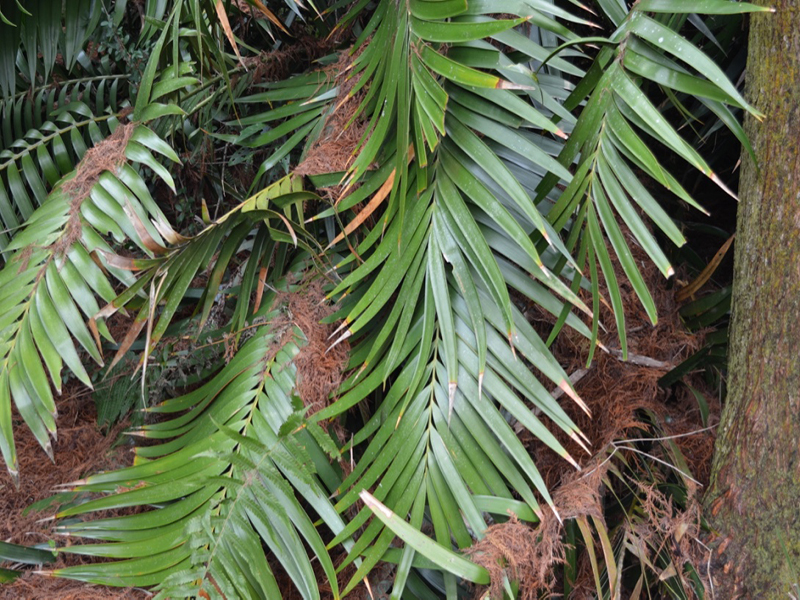| General Description | Long-lived subtropical to tropical plant. |
| ID Characteristic | A crown of shiny, arching, palm-like leaves sprout atop a shaggy upright trunk. |
| Landscape | Temperate gardens as a potted plant where it is grown indoors during the winter months. In more tropical climates it is frequently grown as either a specimen or grouped as a landscape plant. |
| Cultivation | Grows best in shady areas, but will tolerate full sun. In full sun the leaves may turn yellow. It grows best in moist to well-drained soil. Tolerant to some drought. |
| Notable Specimens | Bok Tower Gardens, Lake Wales, Florida, United States of America. |
| Habitat | Rocky areas (eg. inland cliffs, mountain peaks), and forest. |
| Bark/Stem Description | Woody, underground, height of stems can be up to 1.8 metres. |
| Flower/Leaf Bud Description | Female cones can be larger than 30 cm. Male cones can exceed 30 cm in length. After being pollinated it takes several months to a year for seeds to become ripe. Ripe seeds generally need another 3-6 months before the embryos are fully developed and ready for planting. |
| Leaf Description | Leaves are dark green upright and up to 2 m in length. Leaves have thorns at the basal of the petiole. |
| Flower Description | Male and female flowers found on separate plants. |
| Fruit Description | Female cones are grey in colour, ovoid-cylindrical, formed around the apex of the stem and turning brown at maturity, male cones are terminal. |

